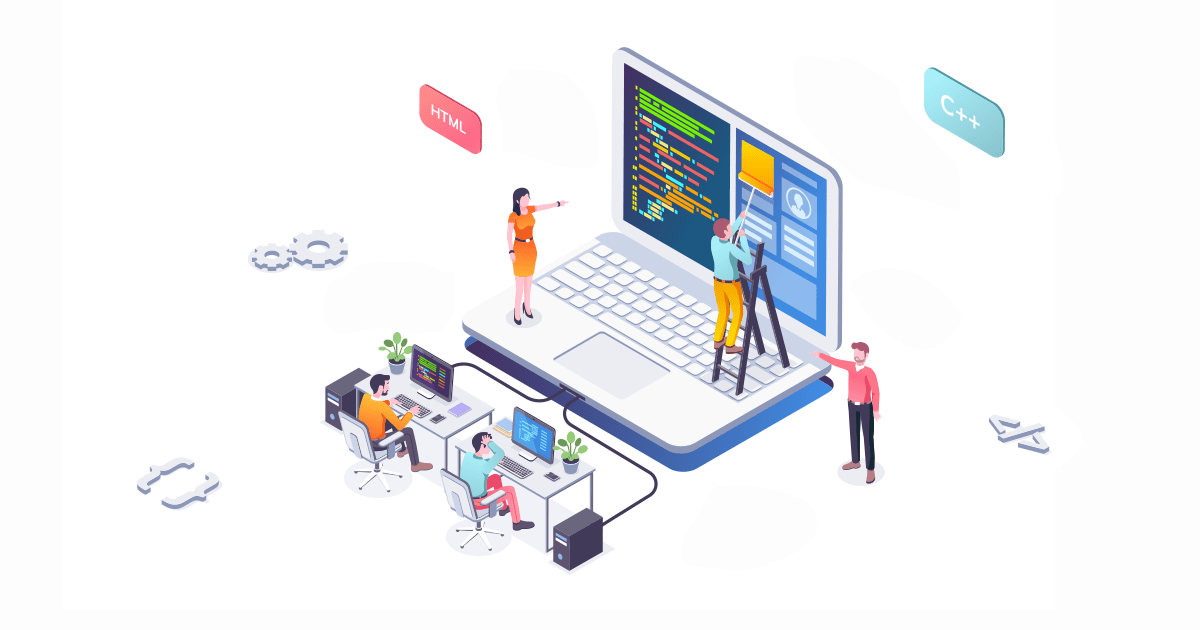In today’s digital age, it’s simply not possible to have a true business discussion without some consideration of IT modernization. Infrastructures like cloud are proven to help organizations drive new efficiencies, reduce costs and power innovation – especially when moving from a legacy environment. Cloud’s flexibility is a major leap beyond mainframe. Legacy application modernization makes it easier for businesses to scale and accommodate growth to perfectly align with customer needs.
As we approach the end of this decade, the number of active legacy migration projects has never been greater. In fact, a recent survey of leading business decision-makers indicates a big push to migrate away from the high costs and inflexibility of legacy systems. The survey notes 94 percent are actively considering migrating, while nearly 80 percent feel their organizations are late to the game. And the move is to cloud – with another industry report determining nearly 70 percent of businesses making a cloud decision within the next two years.
And it makes sense – as companies around the world are realizing significant efficiencies. In fact, rapid, low-risk migrations are becoming mandatory to thrive in this new environment. That’s why thousands of MIPS are being moved to Windows, UNIX, and LINUX – both on premise and in the cloud. Solid migrations have the power to increase efficiency, ease access to resources, simplify administration and management, and streamline expenses. Having such significant impact, transition planning (especially from mainframe) is now more than a technology consideration.
Taking Legacy Application Modernization to the “C-Suite”
Not too long ago, infrastructure modernization was a technology-only decision – with migration strategies tied to IT planning of storage, application management, and Web site development. The primary stakeholder was the IT manager with limited input from the businesses as a whole.
But as the digital transformation takes hold across industries, modernization initiatives are a top agenda item in the C-Suite. That’s because the infrastructure impacts every function – from finance and marketing to e-commerce. Modernization is not just about availability and speed - but also about agility, mobility, collaboration, innovation and time-to-market. Transitions now require a joint journey between IT and business decision-makers. This ensures IT and business strategies are well-aligned, while reducing the risk of silo’d decision-making and poor governance.
The most successful legacy application modernization projects often begin with a thorough review of business priorities. The intent is to see where agendas overlap – and where gaps may exist. Key opportunities are pinpointed, and discovery of potential technology solutions are identified. By assessing the costs, resources, and feasibility of migration – the team can actually build an ROI model to move forward.
Making the Leap from Mainframe
By most reports, mainframe infrastructures significantly block business growth. With limited agility, the infrastructure makes it difficult to identify and quickly respond to market changes and customer priorities.
The environment is simply too rigid to support any meaningful, real-time decisions. From a cost perspective, monthly license fees continue to rise nearly seven percent annually – and the increase in mobile, batch and Web transaction loads are pushing these expenses even further. Mainframe skills are also few and far between – and it’s becoming increasingly costly for businesses to find the staff to support it.
So how can businesses with mainframe infrastructures not only survive, but thrive? The key is the right partner.
The Way Forward from Mainframe
Companies like Astadia are extremely well positioned to help ease the transition. Our Mainframe Modernization Path is built on experience – with the team handling millions of lines of code from hundreds of businesses. Backed by three decades of experience, Astadia produces custom solutions that meet any modernization requirement.
Key is a three-step process, designed to identify, define and deliver a reliable path for customers:
Mainframe Assessment
During this stage, Astadia thoroughly assesses the existing technology infrastructure, processes, and resources to pinpoint the value of a migration. This delivers key data sets and metrics leaders can use to prove ROI to members of the Board Room.
Mainframe Modernization
During this stage, the team puts plans into action with a custom mainframe-to-cloud migration plan and deliverables. By “re-platforming”, we help unlock the constrained mainframe and take a step beyond typical “Lift and Shift” methodology. Automatic Code Conversation easily translates to a modern language like Java or C#, while ongoing environment optimization ensures the infrastructure is leveraging the latest technology.
Application Modernization
Once applications become independent from the mainframe, our planning moves to long-term strategic engagement. Optimization and modernization of the application landscape takes shape – based on refactoring and re-writing of applications, along with CI/CD, Automated Testing and Mainframe Managed Services.
It’s also important to note there is no “one-size-fits-all” approach to migration. Much like each individual has different clothing sizes, not all mainframes are created equal. In fact, each shift requires specific and custom attention. With mainframe transition, it’s less about “best-practices” and more about “right practices”. The goal is to get to the best structure and approach to fit a client’s unique scenario.
Winning Mainframe Migration strategies are supported by a real-time conversation and flow of questions and answers – covering business context, types of apps, staffing, costs, risk constraints and portfolio. That’s the only true way to design a path that’s right for each organization.
Take the Next Step
As the digital universe continues to take shape, effective infrastructure modernization is only going to become more critical. It’s critical to team with the right partner and build a mainframe migration strategy specifically for your business – and then execute every step of the way.
Subscribe to our newsletter
Related news
Related white papers:
Let's Talk
Get in touch with our experts and find out how Astadia's range of tools and experience can support your team.
contact us now





